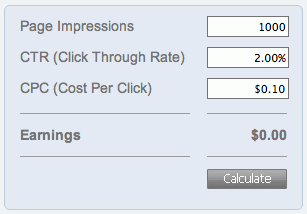A program run by Google for the advertisement of websites by displaying related and targeted Google ads is known as Google Adsense. Google started this advertisement program eight years ago and from that time to the present time, millions of website owners got benefit and earned money through it.
Google Adsense advertisement program is for the website owners who want to make money by displaying the ads on their websites. It is an inexpensive form of marketing and an easiest way for the website owners to earn money online. The website owner just has to host an ad on his website and he earns money on every click (pay per click).
Getting the ads is very easy; the ads are displayed on the websites which has activated Google Adsense. Google sets up an account for the website owner and give him a code which is required for the displaying of adverts. By just entering the code in the content pages, the owner can start showing the ads. These ads can be in form of text, images or videos. A website owner can select or specify the place where he wants the ad to be shown. A website owner can place ad units, these are full ads and he can also place link units, these are just a strip of text link.
On the other hand, the Google Adsense allows the businesses to do the advertisement on the other websites and when any person using internet or searching something clicks on that ad then the business pays to Google on each click.
For making money with Google Adsense, a website owner needs high traffic on his website and it can only be done with search engine optimization (SEO). SEO contains link building, article submission, forum and comment posting with the URL of website or web pages. There is targeted traffic as well as non-targeted traffic available on internet. The advertiser always want the targeted traffic so, when the people (targeted traffic) looking for the services an advertiser is offering, they click on it and action takes place.
The most important thing for earning money is that the ad must be relevant to the theme and content of the website on which it is advertised. Google pays some percentage of money that it has earned, to the owner of the website that is hosting an ad on his website. The keywords also play an important role; related keywords should be used in the content of website that will attract related ads.
For getting started, first of all select a good topic that is interesting. Write useful articles on that topic and then post it on the website. Then start building links to those articles and one thing should be kept in mind, select good keywords. Keywords are responsible of attracting traffic on a website or a web page. A great way of increasing the profits is to place the ad exactly beneath the title of the page; by this a website owner will surely get the clicks.
Google Adsense advertisement program is for the website owners who want to make money by displaying the ads on their websites. It is an inexpensive form of marketing and an easiest way for the website owners to earn money online. The website owner just has to host an ad on his website and he earns money on every click (pay per click).
Getting the ads is very easy; the ads are displayed on the websites which has activated Google Adsense. Google sets up an account for the website owner and give him a code which is required for the displaying of adverts. By just entering the code in the content pages, the owner can start showing the ads. These ads can be in form of text, images or videos. A website owner can select or specify the place where he wants the ad to be shown. A website owner can place ad units, these are full ads and he can also place link units, these are just a strip of text link.
On the other hand, the Google Adsense allows the businesses to do the advertisement on the other websites and when any person using internet or searching something clicks on that ad then the business pays to Google on each click.
For making money with Google Adsense, a website owner needs high traffic on his website and it can only be done with search engine optimization (SEO). SEO contains link building, article submission, forum and comment posting with the URL of website or web pages. There is targeted traffic as well as non-targeted traffic available on internet. The advertiser always want the targeted traffic so, when the people (targeted traffic) looking for the services an advertiser is offering, they click on it and action takes place.
The most important thing for earning money is that the ad must be relevant to the theme and content of the website on which it is advertised. Google pays some percentage of money that it has earned, to the owner of the website that is hosting an ad on his website. The keywords also play an important role; related keywords should be used in the content of website that will attract related ads.
For getting started, first of all select a good topic that is interesting. Write useful articles on that topic and then post it on the website. Then start building links to those articles and one thing should be kept in mind, select good keywords. Keywords are responsible of attracting traffic on a website or a web page. A great way of increasing the profits is to place the ad exactly beneath the title of the page; by this a website owner will surely get the clicks.



.jpg)



















